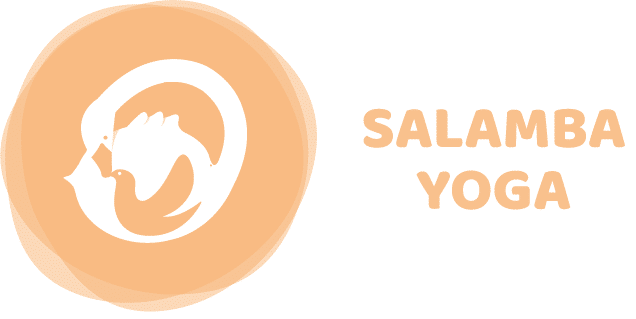Classical yoga asanas are the eventual shapes and movements we want our bodies to perform. This requires coordinated movements of different joints and muscular groups put together, which is a result of years of practice and perseverance. This means that we cannot be in an asana just by throwing our bodies into the postures, on the contrary, we need to be well- informed about the musculoskeletal interaction while doing a yoga asana. Lots of yoga students have the misconception aboutasanas being equivalent to a flexibility quotient of the body. This is entirely wrong, as for any yoga asana to be done effectively, one must strike a right balance between strength, stability and mobility. Flexibility is a byproduct of these coordinated movements. This is the reason,we at SalambaYoga see yoga asanas as an eventual destination to be achieved, and we stress the importance of preparing ourselves slowly and gradually by repeating yoga asanas in a method centric way.
How to achieve the required yoga asana?
Let your conscious practice of yoga asana movement be your journey.
We have laid down basic steps to be followed that we use in our yoga teacher training courses.
- Break down your yoga asana, yoga asana can always be broken down and a meticulous practice of stages of yoga asana results in a greater sense of alignment and joint stability. For example, while doing Trikonasana,initially focus on legs stability. This can be achieved by properly engaging the anterior and posterior muscles of the legs,resulting in greater pelvic stability. Having done this, focus on trunk lengthening by only bending from the acetabulum (hip socket) rather than dropping side trunk in Trikonasna. Lastly, focus on rotation of the rib cage in final posture. While conducting yoga courses in Nepal, we teach separate variations for all the above-mentioned muscular activities, so as to make a posture more impactful.
- Recognize the key movements: Key movements of the yoga asana are essential to be recognized and practised. Without these key movements, yoga asana impacts are difficult to be incorporated. Essentially every asana has some key movements. Side ribs movement is essential for forward bends, similarly scapular movements are essential in back bends. Apart from these general activations, there are specific muscular activations which are also particular to different sets of asanas. Repetitive conscious yoga practice lays a good foundation of understanding key movements and making full use of them in your yoga practice.
- Compare these movements with other asana movements: Having understood these key movements, a comparative study must be done to identify similarities between different asanas. By recognizing these movements,we can sequence asanas intelligently to make good progress. For example, Triang Mukhaikapada Paschimottanasana and Krounchasna can be treated as belonging to the same family, considering one leg to be in Veerasana.
Grouping postures by identifying the family they belong to,is an integral part of yoga courses Nepal in which students get to sequence postures by identifying similar muscular and skeletal actions.
- Intelligent usage of props: How can we forget prop usage in our yoga journey?Props are an important support system in our practice of yoga. Most of yoga practitioners around the world assume props are used to bear our weight or to compensate for lack of movements of the joints. On the contrary, props are used to let the practitioners find their internal support system by introducing the external support in the form of props. There is a whole science behind using yoga props which has to be understood to achieve the required work in any yoga asana. For more details read Yoga courses Nepal incorporate a detailed and well- planned structure to introduce the knowledge of props usage.
- Regular practice of these movements: Practice is the best teacher and conscious practice is even better. As a yoga student, one must never give up practising and try to be regular, even if that means 20 mins of practice every day. Remember Rome was not built in a day and a seed takes all its time to grow into a massive tree. So, keep hitting your mat and let your conscious practice guide you into the deeper aspects of yoga asanas.
SalambaYoga conducts courses in Nepal and India every year. Check out for yoga in Nepal.
